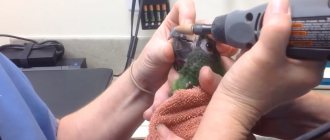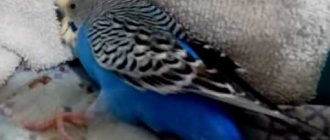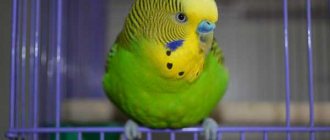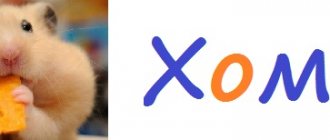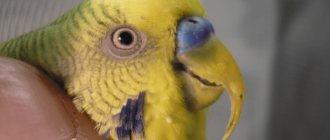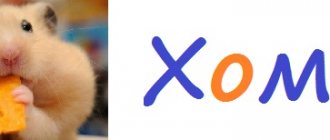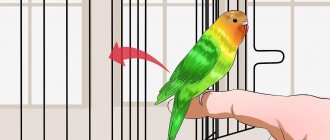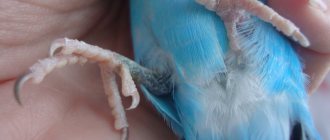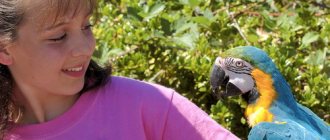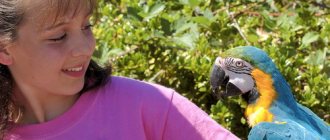Seizures in parrots, like many other types of ailments, often become a real scourge for many bird breeders. After all, you are unlikely to be able to calmly watch your parrot feel bad.
In cases where your budgie has convulsions, or for no reason he hits the cage, you should immediately seek help from a veterinarian. No less dangerous symptoms should also include spasm of the bird’s limbs and the likelihood of a seizure.
In particular, if you study the information presented on numerous forums while searching for answers, you will be convinced that these symptoms are not uncommon, although they are described rather poorly. However, despite this, there will be certain similarities in them.
Most often, a parrot suffering from seizures is susceptible to other types of ailments. Such as loose stools, paralysis, loss of coordination, etc. In addition, the bird will probably lose its appetite and will begin to make sounds uncharacteristic of birds from time to time.
Even an experienced bird breeder is unlikely to answer you about what to do in such cases and what could have caused the budgie’s unusual behavior. After all, not all of them have encountered their bird convulsing.
Moreover, even qualified veterinarians are often confused by the list of symptoms and prescribe treatment that is completely inappropriate for the bird. Which often leads to catastrophic consequences when the parrot dies in the arms of its owners.
Main reasons
If a parrot's wings tremble or its tail twitches, there can be many reasons for this behavior of a feathered pet. Trembling can be caused by:
- severe stress, fear, nervous shock;
- unbalanced diet;
- violation of the rules of care and maintenance;
- loneliness, lack of attention;
- viral, bacterial, respiratory infections;
- parasitic diseases;
- hypothermia, poor microclimate in the room where the bird is kept.
If the shaking parrot has become ruffled, has become inactive, lethargic, apathetic, constantly shakes its wings and tail, refuses to feed, or the pet exhibits other symptoms uncharacteristic of a healthy wavy, we recommend consulting with a veterinarian or ornithologist.
Very often parrots shiver due to the cold. Budgies, like any other species of parrots, are heat-loving creatures. Cold, drafts, and sudden temperature changes reduce the bird’s immunity and can cause the development of respiratory ailments.
If a budgerigar sits on a perch with a ruffled look, has pulled its head into its neck, reacts sluggishly to stimuli, and does not show interest in the world around it, move the cage with the bird to a warmer place and cover it with a thick cloth. At some distance from the cage, you can install a fluorescent lamp, pointing it at the bottom of the bird’s home. This will help the wavy warm up faster. Cover one side with cloth so that the parrot can choose the most comfortable place in terms of temperature.
At the same time, you should not place your pet near heating devices or in the scorching sun. Overheating, like hypothermia, can negatively affect the condition of the pet. When overheated, the bird sits with its beak open and spreads its wings. Breathing is rapid and shallow.
First aid
Before deciding what to do to help the bird, it is necessary to determine the exact cause of the trembling. If the parrot is ruffled and trembling from the cold, it should be warmed up; At the same time, it is important to prevent overheating, which is also harmful to the health of the bird. If the trembling is caused by fear or stress, you need to move the cage to a quiet room, talk to your pet in a calm voice and treat him with a treat.
If the cause of trembling is improper feeding, you should change the bird's diet, introduce soft and succulent food and vitamin supplements. If there are any signs of disease (infection, parasite damage, injury, etc.), the parrot must be shown to a veterinarian as soon as possible. Incorrect or untimely treatment can lead to deterioration and death of the pet.
Stress
A budgie may shake or tremble due to fright or severe stress. Wavys are very shy and emotional creatures, so they have a hard time withstanding any changes. The bird may be frightened by sudden noise, loud sounds, music, or guests. Changing the usual environment or replacing a cage can also cause severe stress in the bird.
It also happens that the wavy can be frightened by other pets living in the apartment (cats, dogs, other birds, rodents). This can happen not only when the bird is on a walk, but also when it sits in its cage. Therefore, try to protect your pet, especially during the adaptation period, from contact with other animals that can greatly frighten him.
Parrot and cat
Once in the house of a new owner, until the wavy gets used to its new habitat and members of its family, it may become nervous, behave restlessly, constantly scream, and fluff itself up. To ensure that the adaptation period passes as quickly and stress-free as possible, try not to disturb your pet at first. It will take some time for the parrot to get comfortable and get used to the new environment.
Why does the parrot shake its head?
Sometimes birds nod their heads for the same reasons as people. For example, he is worried about parasites, has a headache, or simply has a speck in his ear that he is trying to get rid of. Let's start with natural causes that do not require medical intervention.
Did you know? The human eye is equipped with two eyelids, but the parrot also has a third. It is usually hidden, but comes into play when you need to lubricate the eye or protect it from dust.
Among them:
- hunger;
- thirst for attention;
- courtship of a female;
- excitement or anger.
He can also hear sounds that you can't hear, so shaking or shaking his head is his reaction to the sound.
Natural causes are followed by causes that are based on one or another disease. And this means that shaking your head will be accompanied by other symptoms. If you know your pet's usual behavior well, then a detailed description of all the behavioral features will help the doctor in making a diagnosis.
You will be interested to know which parrots are the most expensive and rare in the world.
Diseases in which the bird shakes its head:
- presence of parasites;
- infection of the nose or ears;
- goiter blockage;
- swelling of the larynx as a result of a cold;
- bruise and concussion.
During recovery from illness, the bird may be exhausted and weakened. When she yawns, she performs movements that are perceived as swaying from side to side.
Malnutrition of a parrot
Small parrots, which still depend on their parents for food, jerk their heads up and down when asking for food. This applies to all types without exception. Thus, the baby communicates that he is hungry and it would be nice to feed him.
Did you know? The most expensive parrot in the world is considered to be the palm cockatoo.
Ornithologist collectors are willing to pay from 8 to 12 thousand US dollars for a young specimen.
Please note that the food may be low in nutrients. And you will be sure that the bird has received food, and its growing body signals the opposite. In this case, you need to use higher quality food. And to reduce the need for night feedings for babies, introduce probiotics and digestive enzymes into the diet, which support slow digestion.
Lack of attention and stress
Adult parrots may shake their heads when they are hungry for attention. To solve the problem, offer your pet a toy or game. For example, ring a bell - this will attract attention. Or offer a piece of your favorite treat in a cardboard box. This will stimulate the natural instincts of searching for food. This is also a way to keep your pet busy for a long time if you don't have time to play with him.
We recommend that you learn all the most important things about keeping macaws at home.
When a parrot is angry, it shakes its head up and down. Perhaps right now he needs something or is annoyed by some object. Thus, he draws attention to the situation and demands that it be resolved immediately.
When you enter the room, your pet may express joy. Shaking the head or tail may simply be characteristic of a pet in such a situation. Otherwise, trembling means nervousness. Knowing your habits will help you determine which explanation is closer to the truth. If the reason is stress, simply remove the object that causes it from the bird’s environment.
Courtship of a female
An adult, sexually mature parrot can throw its head up, which is also perceived by people as swaying. He complements such movements with whistling and slightly open wings. All together this is called marital courtship and is necessary in order to impress your partner. At the same time, some slightly open their mouths, raise their tails, and begin to move rhythmically. Sometimes females also make the same head movements, but this is less typical for them.
Did you know? Each species of parrot has its own forms of courtship, which are not similar to the mating games of other species.
A nursing couple cranes its neck or shakes its head as it regurgitates food for the babies. As children grow older, the need for such actions disappears, and the bird will shake its head only occasionally. The same belching is observed during the mating season, when the partner offers a tasty treat to the partner. Interestingly, this is also how a bird may be trying to show you how to take care of you, so don't scold it if food particles end up on your shoulder.
Hypothermia
To conserve energy, all birds are equipped with a natural temperature regulator. If the room is cold, some species will lower their body temperature by reducing the amount of movement they make and become “numb,” while others will begin to shiver, which causes their body to warm up, so your parrot may shiver.
Read about how to stop parrots from biting.
Provide your pet with a comfortable temperature:
- make sure the cage is away from windows and external doors and not in a draft;
- check the humidity, heating should not dry out the air;
- cover the cage at night;
- Set the room temperature from +18°C to +29°C.
At temperatures below +4°C, the bird will freeze and catch a cold, and if the thermometer shows above +30°C, this will cause it to suffer from heat stress.
Disease
All types of parrots have excellent immunity. But nevertheless, the risk of infection exists, since it often does not depend on our wishes, so it is important to take preventive measures in time, and also be able to identify the moment when a pet needs medical attention.
Find out what to do if your parrot is constantly screaming.
Diseases are divided into 3 groups:
- invasive (caused by the presence of parasites);
- infectious;
- traumatic origin (bruises, wounds received due to mistakes in keeping parrots).
Crop blockage
The peculiarity of the parrot's digestive system is that it can swallow a lot of food at one time, but it must enter the stomach gradually. To regulate the process, nature created a crop - a sac in front of the breast, where swallowed food ends up. There it is moistened with special enzymes and moves into the stomach.
Blockage of the goiter is the absence of such movement. Usually the condition is associated with poor quality feed. As a result, food accumulates, hardens and begins to decompose.
Main symptoms:
- frequent belching, but the bird does this with great difficulty;
- refusal of food;
- general apathy;
- lethargy;
- thickening of the goiter;
- unpleasant odor from the beak;
- arrogance.
Did you know? African Gray Parrots (Greys) often shake their heads. It is unknown why they do this, but it is natural behavior for this species.
The doctor will prescribe treatment only after the diagnosis is confirmed. The bird may be prescribed 20–30 ml of Vaseline oil to help facilitate the passage of food. If nothing can be done, the food from the crop can be surgically removed. In the first days after surgery, disinfectant solutions will be used, and then treatment will be prescribed to normalize digestion. You will also need to review the diet, add vitamins B2 and B12 and minerals to it, and be sure to provide the parrot with succulent food in addition to dry food.
Sternostomosis
Small arthropod parasites, mites, can parasitize any birds, including parrots. They can come to you completely by accident, for example, along with the clothes of a person who came from the street. The tracheal mite settles on the mucous membranes, and this disease is called sternostomosis.
Pay attention to how much popular parrots cost and where it is more profitable to buy them.
The following symptoms accompany it:
- severe cough with throwing back of the head;
- difficulty breathing, which causes the bird to throw its head back;
- lack of appetite;
- weight loss;
- beak deformation;
- itching;
- loss of feathers on the sternum.
At the initial stage it is very difficult to diagnose the disease.
It can develop for several months before the bird begins to show concern, so if your parrot behaves unusually, you should immediately consult a doctor. The mites will attach themselves to an unwary bird using their spiny mouth openings and suck blood for several days, growing in size. After saturation, they disappear, but an anticoagulant is injected into the puncture site. Parrots will react to this substance by itching and screaming. And in the later stages of infection, the pet may even die.
Important! Constant itching from parasite bites causes the bird to itch and pluck feathers. Once the disease is treated, she may continue the habit of feather plucking for life. This condition does not require treatment, it will simply become a feature of the pet.
During the day, adult ticks will hide in the cracks of the cage, and at night they will pester the bird with bites. Treatment consists of treating the affected areas of the body with antiparasitic ointment - Aversectin or Novertin. They do this several times a day. Vaseline oil is prescribed for the skin around the eyes and nose. Complete disinfection of the cage and care items is also required.
Swelling of the larynx due to a cold
Laryngitis is an inflammation of the larynx. And since a parrot also has a larynx, it seems logical that birds, like humans, can develop laryngitis as a result of a respiratory infection.
We advise you to find out what a drum parrot looks like and how to care for it at home.
Main symptoms:
- redness of the mucous membranes;
- cough;
- decreased body temperature;
- chills;
- ruffling;
- convulsions.
At the same time, the parrot shakes its head up and down, trying to push food into its sore throat. In such a situation, active heat treatment is used. To do this, an infrared lamp is placed next to the cage. Separately, inhalations with the addition of eucalyptus oil can be used. Laryngitis is a complication of an untreated cold, so you need to continue the treatment prescribed by the doctor, or ask to change the course if after a few days you do not notice any improvement in your pet’s health.
Bruise and concussion
A blow to the head causes swelling of the brain tissue, as well as internal bleeding from ruptured blood vessels. Even if it seems to you that the bruise was not severe, your pet needs to be shown to a veterinarian. In the early stages of the disease, it is impossible to tell how badly the parrot is affected.
Important! If a spray form of medication is prescribed for treatment, apply it from a distance of at least 30 cm and do not point it at the head. Processing time should not exceed 3 seconds. If you increase it, the pet will become poisoned by toxins.
Signs of a concussion include:
- chaotic eye movements;
- weakness in coordination of movements;
- dilation or constriction of the pupils;
- dizziness;
- nausea;
- vomiting;
- disorientation;
- convulsions;
- to whom.
Treatment for head injuries is aimed at reducing pressure on the brain by reducing swelling of the brain tissue. In severe cases, surgery may be required to relieve internal pressure. The injured bird is hospitalized until the condition becomes stable and the swelling stops. In case of shock or to relieve pain, the doctor will prescribe analgin with Relanium. Then treatment will be symptomatic.
Overfeeding
You may notice that your parrot has an excessive appetite. He eats a lot and it seems like he can't stop. If you take food away, the parrot gets angry, screams and shakes its head up and down with expression and anger.
Check out the 10 Best Talking Parrot Breeds.
This behavior is usually characteristic of young birds. They grow, and the food offered does not cover their needs, so the parrot tries to fit in as much food as possible. In this regard, you definitely need to reconsider his diet, taking into account his age-related needs for calories, vitamins and minerals. And then check how balanced the menu is and add what is missing.
If your pet has eaten too much and is not feeling well, then wait until he is hungry again. If there is vomiting, diarrhea, or lethargy, call your veterinarian to prescribe treatment. Chronic overeating can make your parrot obese.
Lack of vitamins
The term vitamin deficiency refers to a lack of vitamins in the body. But usually we are talking about a lack of one or more. And this disease is called hypovitaminosis. Most often, the problem occurs when there is a lack of green feed and an excess of grains in the poultry menu.
Did you know? The budgerigar's heart rate is extremely high and cannot be monitored by normal listening as its heart beats more than 300 times per minute.
Main symptoms:
| For vitamin deficiency | Symptoms |
| A | dry skin, upset stomach, thickening of mucous membranes |
| D | poor coordination of movements, deformation of bones and beak, rickets |
| B | motor dysfunction |
| WITH | lethargy, drowsiness |
| E | general weakness, ruffled feathers |
Treatment occurs by making changes to the bird's diet. This is done by giving the parrot a vitamin complex for 1–2 weeks or using food. Thus, carrots are a supplier of vitamin A, and legumes supply B vitamins. Vitamin C is found in acidic fruits or added in the form of ascorbic acid to drinks. The source of vitamin E is sprouted grains, and vitamin D is prescribed by adding fish oil to drinking water.
Diseases, infections
Budgerigars are susceptible to various diseases. Viruses, bacteria, fungi, and internal endoparasites harm the health of feathered pets and can cause sudden death. Therefore, if the parrot is shaking, constantly trembling, and looks lethargic, it is possible that the pet has caught an infection or is infected with internal parasites.
Owners of wavy cats should be alert to the following symptoms:
- change in the pet’s behavior (anxiety, lethargy, depression);
- the bird sits on a perch or at the bottom of the cage on two legs;
- rapid breathing, cough;
- upset stomach (diarrhea);
- uncharacteristic “croaking” sounds;
- poor condition of the feather cover;
- violation of movement coordination;
- lameness, spatial disorientation;
- loss of appetite, complete refusal to eat;
- discharge from the eyes, beak;
- increased thirst.
Sick parrot
If a budgerigar's wings are shaking, it itches, pulls out feathers (self-plucking), shows anxiety, wounds and scratches appear on its body, it is possible that the pet is infected with feather eaters and external parasites.
In any case, if you notice any manifestations of disease in your budgie, do not self-medicate. Uncontrolled use of drugs and incorrectly selected dosages will only worsen the situation. Treatment and medications for therapy will be selected by a veterinarian based on the root cause of the disease.
The parrot can be prescribed antibacterial, anti-inflammatory, tonic agents, special food, and vitamins. When infected with ectoparasites, complex insecto-fungicidal and acaricidal agents are used in drops and sprays.
How can you help a parrot?
What should you do if your parrot has seizures and how can you help him?
First, you must understand that self-treatment, without consulting a specialist, can lead to the death of the bird. Be responsible and be sure to consult with an ornithologist, and if there is none, you can contact a veterinarian.
The parrot owner’s task is to provide the sick bird’s body with the necessary vitamins and microelements. You can purchase dairy-free baby formula, make it liquid, and feed it to your parrot. A syringe without a needle is suitable for feeding; you can insert a thin tube into it. You need to feed about 3 times a day, 3 ml. This protects the body from dehydration, which often causes death.
To relieve symptoms of seizures, you can use ampoules of calcium gluconate diluted in 10 ml of clean and warm water. This treatment of a parrot should be carried out for 5 days.
It is recommended to constantly ventilate the room with the bird's cage so that it receives sufficient fresh air.
If an infectious disease is diagnosed, the doctor prescribes a treatment regimen with antibacterial drugs and their dosage. All you have to do is follow the instructions and follow all the recommendations exactly without missing the time to take your medications.
Other reasons
If a parrot often trembles, twitches its wings, plucks feathers, or behaves restlessly, such behavior can be provoked by hypovitaminosis, vitamin deficiency, or non-contagious diseases.
To avoid vitamin deficiencies and metabolic failures, review your pet’s diet. Supplement your parrot's diet with berries, fruits, multivitamin complexes, and vitamin and mineral supplements. Feed your bird only high-quality grain mixtures that have a fully balanced composition and contain all the necessary nutrients.
The bird may tremble, shake its tail, wings from loneliness, lack of attention from its owners. To normalize your pet’s emotional state, spend time with it, communicate with the bird, and let it fly around the apartment. As a last resort, if the parrot remains at home alone for a long time, get him a couple. Place various toys in the cage that will brighten up the bird's leisure time in your absence.
To prevent your parrot from getting bored, arrange the cage properly and put toys in it.
By showing attention and care for your parrot, creating optimal living conditions for the bird, you can not only avoid many types of diseases, but also prolong the life of your feathered friend.
We invite you to join our Zen channel and group on VKontakte or Odnoklassniki, where new articles for pet owners are published.
Similar articles:
- Top 5 Mistakes of Budgerigar Owners
- Feeding the finch correctly
- Fleas on a parrot: how to help an exotic bird?
Associated symptoms and treatment
Each disease manifests itself with its own characteristic signs, which allow the owner to assume a specific disease. If it is difficult to determine the disease on your own, then you need to contact a specialist at a veterinary hospital and undergo diagnostics. Among the most common symptoms, along with tremors in the wings, the following signs are observed:
- tousled appearance;
- cough, sneezing, exudate;
- twitching, agitated state, constant scratching and biting of feathers;
- falling from a perch;
- poor appetite;
- sore and swollen appearance of the eyes, with a characteristic red color of the eyelids.
Important!
If characteristic symptoms are detected, it is necessary to urgently begin treatment for your feathered friend. Effective therapy will eliminate severe complications and death.
Treatment depends on the cause of the tremors in the wings. If it’s stressful, then you shouldn’t bother your pet again. In the case of a lack of vitamins, it is necessary to adjust the diet and the bird will independently restore its strength and neat appearance. If ticks have been diagnosed, then special drugs against parasites are prescribed. Colds are treated with antibiotics, warming and inhalation. The effect of therapy depends on compliance with all recommendations and the attentiveness of the owner.
Avitaminosis
The parrot is shaking due to a lack of vitamins. You should consult your veterinarian about this. Perhaps changing the food to one enriched with microelements will help. After consultation, a vitamin supplement is chosen for the main diet. Feeding with fresh vegetables and fruits cannot be ignored. Almost everything suits parrots except papaya, persimmons and nuts. It is also necessary to offer the bird greens:
- sorrel;
- dandelions;
- wheatgrass;
- shepherd's bag
The main thing is to find out in time why the parrot begins to shake.
Sternostomosis
A parasitic infection caused by a tracheal mite. It affects the internal organs, lungs, back of the trachea and larynx. Both young and adult ticks are characterized by increased mobility. They move easily along mucous membranes.
Basically, tick infection occurs during contact with a sick individual or infectious objects, food and water. The symptom of this disease in the first stages is partial loss of voice or its complete loss. Next, coughing and wheezing appear. Due to heavy breathing and frequent swallowing, the parrot shakes its head. Chaotic movements help get rid of mites in the larynx.
To diagnose parasites, a tracheal smear analysis is taken, in addition to an analysis of the droppings. The drug Ivermectin is used in the treatment of sternostomosis. This remedy has a destructive effect on the neuromuscular endings of parasites and leads to paralysis and further death.
Requires application several times. The break between doses is no more than two weeks. There are analogues of the drug, such as Permethrin, Dectomax, Ivermectin.
NOTE! The treatment regimen, duration and dosage are prescribed and carried out by a specialist.
Goiter inflammation
This is a disease of granivorous birds, often occurring with vague symptoms. The main symptom is inflammation of the goiter sac. In addition, the bird:
- shakes and stretches his neck;
- behaves restlessly;
- constantly regurgitates food;
- becomes lethargic;
- refuses food.
In advanced cases, the parrot spits out food, the mucous membranes become bluish, and the crop sags. The pet cannot swallow at all, its beak often opens, viscous saliva appears, and the feathers on its head stick together. The bird subsequently dies. This condition leads to:
- poor quality food;
- poisoning from toxic plants or chemical vapors;
- complication after infectious diseases.
It happens that a bird does not receive the necessary mineral elements and compensates for them by stuffing its crop with grain, which leads to inflammation.
The disease is often detected at a stage when it is practically impossible to help the pet. As a rule, treatment at home cannot save the bird; an urgent visit to the veterinarian is necessary. It is important not to miss the symptoms and find out why your pet parrot's head begins to shake.
For this purpose, an examination is carried out. Antibiotics are used only if the infectious origin of the disease is confirmed. In parallel with the main treatment, medications are given to support the liver. To avoid exhaustion, the bird is fed liquid porridge.
Hygiene and care
If the rules of animal hygiene are violated and irrational feeding occurs, arthrosis and arthritis quite often develop in ornamental birds. In addition, these pathologies can be caused by poorly selected cage equipment, for example, a perch with a diameter that is too small. Only a veterinarian can identify problems with the joints, based on the results of an examination of the parrot and X-ray data. Treatment is conservative, using hormonal and anti-inflammatory drugs, as well as antibiotics.
If the clinical picture of the pathology of the parrot’s limbs manifests itself in the form of metamorphoses of joints and bones, then we can talk about the presence of an infectious disease. This pathology develops under the influence of Staphylococcus aureus and manifests itself in the form of the appearance of yellowish-white glandular growths on the paws of birds. For successful treatment, the bird owner should immediately contact a veterinary clinic, where, after conducting specific laboratory tests, the veterinarian will be able to make a diagnosis and prescribe effective treatment. In such cases, antibiotics are prescribed. If necessary, anti-inflammatory and wound-healing drugs can be prescribed in parallel.
Possible cause: goiter blockage or tumor
If a bird frequently nods its head and closes its eyes, it is trying to free itself from food stuck in its crop. A pet may make frequent head movements if it has a tumor under its goiter. This can be easily determined by palpation. Ignoring this symptom will lead to the inevitable death of the pet.
Head movements are repeated by individuals experiencing nausea. The disease is accompanied by food falling out of the beak and regurgitation.
How do seizures manifest?
Unfortunately, the parrot does not always flutter around the room and chirp cheerfully while sitting on a perch. When he becomes seriously ill, he may begin to behave differently than usual:
- suddenly begins to beat against the walls of the cell,
- rhythmically turns his head from side to side,
- throws his head back,
- loses orientation in space,
- clenches his beak tightly,
- lies on the stomach or side,
- convulses and spasms,
- his paw stops working, or even both,
- paralyzed, the pet falls to the bottom of the cage and lies with its eyes open, its wings spread and not moving.
There are also accompanying symptoms: diarrhea, lack of appetite, constricted pupils and a “non-bird” squeak emitted from time to time by the parrot.
Do not try to treat a parrot when it has convulsions and all other symptoms; immediately seek help from an ornithologist. Not all even experienced budgerigar breeders know what to do in such cases, so qualified help is needed.
Swelling of the larynx due to a cold
Colds cause inflammation of the larynx. The parrot's throat turns red, the walls increase in volume. While eating, the pet begins to actively nod its head, helping to push food through the swollen throat.
Accompanying symptoms are beak clicking and coughing. Thus, the bird gets rid of accumulated mucus. Body temperature drops and chills appear. Appearance: ruffled. In rare cases, seizures occur. At home, artificial heating will be the basis of treatment. A lamp (no more than 60 W) is installed near the cage. While the bird is warming up, it is necessary to look after the pet, excluding burns or overheating.
Removing lint from the throat
All parrots are very clean, and therefore regularly clean their wings with their beaks. This happens especially often during the molting period. As a result, lint may get lodged in your throat. For this reason, the pet opens its beak wide and stretches its neck, as it tries to get rid of the discomfort that has arisen.
In this case, the parrot will cope with the problem itself. You should only intervene in an exceptional case: if all the bird’s attempts to clear its throat end in failure.
Moving food stuck in the throat
It happens that a bird comes across a large piece of product in the food. Food gets stuck in the throat, and the pet tries with all its might to swallow it. This is the second common reason that a parrot sits with its neck extended forward and its beak open.
At this point, it is important to check whether there is water in the drinking bowl. Drinking will help the parrot cope with the task on its own. But there are no known cases where a pet died from choking or choking on a small piece of food.
Mechanical damage
Almost everyone who keeps parrots has at least once encountered such a disaster. A bird can get injuries to its limbs both in the cage and outside it. If a bird periodically presses the same paw, this is most likely an injury. The reasons for damage to paws in their home can be different. They are capable of getting their fingers entangled in their own toys or the bars of the cage; perhaps the perch is of irregular shape.
The owner of the talker should show maximum caution if the bird flies freely around the house. A bird is able to sit on a window or door, and the owner, when slamming it, simply does not notice and injures his fingers.
The bird will be interested in the shiny, just-boiled kettle on the stove. Taking off on it, thermal burns are inevitable. She can fly and crash into something. You need to carefully examine the limb for cuts, burns or splinters. To provide first aid, you cannot use brilliant green or iodine; these drugs will certainly leave a burn. It is necessary to lubricate the damaged area with Miramistin or Betadine.
The cockatiel presses its paw in case of a fracture. This rarely happens, but only a veterinarian can make an accurate diagnosis. The bone fracture will take about three weeks to heal. The doctor will fix the parrot's leg. Upon arrival home, the bird needs to be provided with the most comfortable conditions possible so that the broken limb is not further aggravated by stress.
